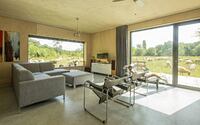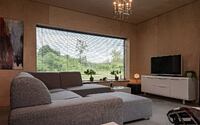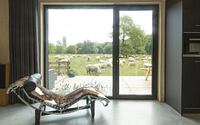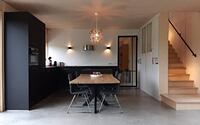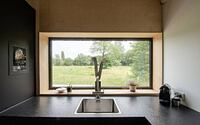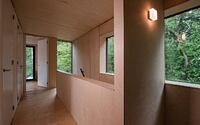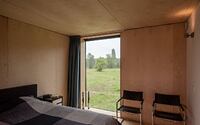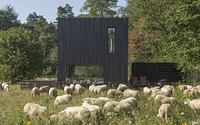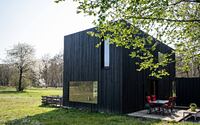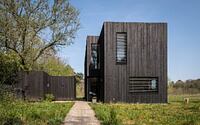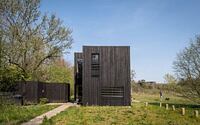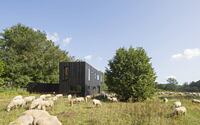Four Seasons House by Joris Verhoeven Architectuur
Four Seasons House is modern prefab located in Netherlands, designed by Joris Verhoeven Architectuur.

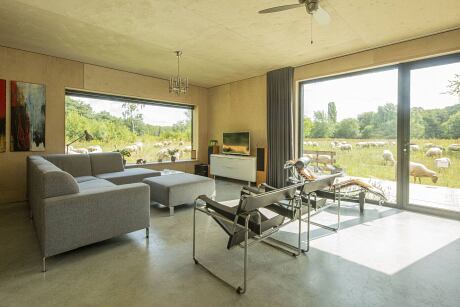
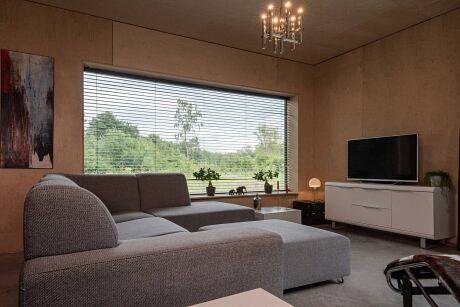

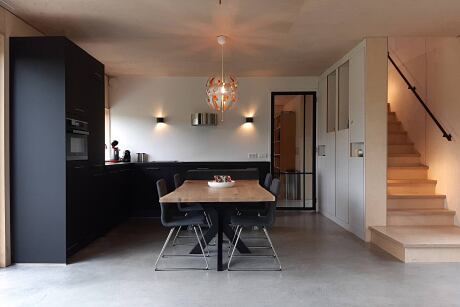
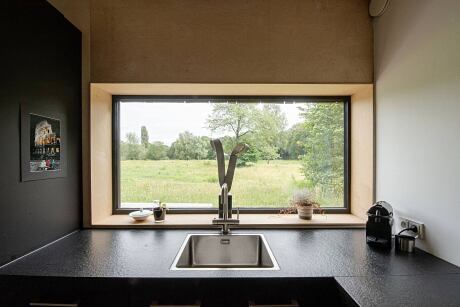
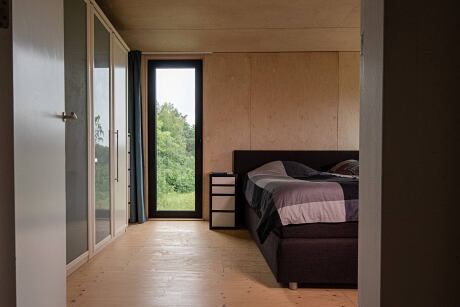
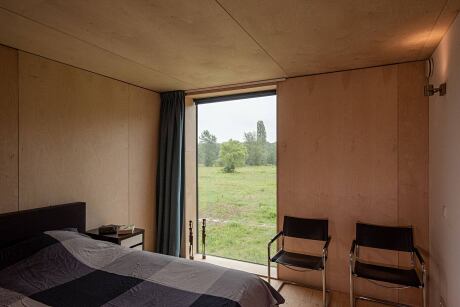
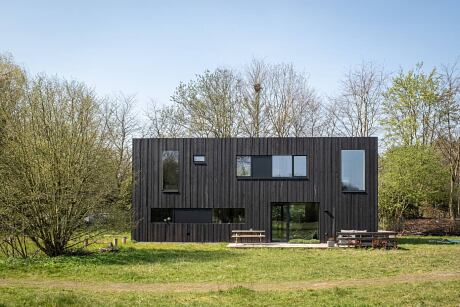
Description
If you want to experience the seasons intensely, you’ll have to reside in architects Joris Verhoeven own familyhome. The Dutch seasons are known for their versatility; fresh springs, warm summers, very wet autumns and now and then an extreme winter.
The house is located in a heather area where the sheep grazed for Tilburg’s wool industry. To enjoy this beautiful environment and the ever-changing circumstances as much as possible, the windows have been meticulously orchistrated. The views thus have become changing landscape paintings.
The building is designed to be a part of nature. With her rough black sidings, she hardly stands out next to the dark trunks of the edge of the treeline. Because the garden is not designed as such, but has been given to nature, the house becomes part of its surroundings. This seems very logical, but it’s a peculiar choice in a country where everyone puts a fence around their garden.
The compact house is constructed in a honest and sustainable method. The structure of the house is made of cassettes of wood filled with flax insulation. This completely prefabricated structure is ingeniously designed by the architect. The interior side of the cassettes is made of decorating birch plywood. This pure way of building, the structural work is also finishing, also benefited the construction price and the construction period. After pouring the foundation floor, the house has been erected in three days.
The wooden interior enriches the rural feeling. The open staircase has also been made of birch wood, matching the structure. Other parts of the interior, such as the interior door, kitchen and stair railing, are finished in matte black, just like the exterior window frames. In this way the in- and outside of the house are deeply related to one another.
Fungi force
The wooden facade has been treated with a fungi that has been specially cultivated in this color. This fungi protects the sidings in a natural way. In case of damage to the coating, the growing fungal layer will selfrepair. When the fungus is fading it means it’s hungry. Then you’ll have to feed it with linseed oil for new wood protection and to become matte black again.
The natural appearance of the weathering wood sidings is magnified by chosing different sizes. This gives the facade depth that is emphasized at some times during the day by grazing sunlights.
Using less building materials, less transport and no use of water means building for a better future. This natural and prefabricated way of building results in a negative carbon footprint. Last but not least; the house is a sustainable power plant. The solar and thermal panels on the roof make it totally self-sufficient.
Photography by John van Groeneda
Visit Joris Verhoeven Architectuur
- by Matt Watts
